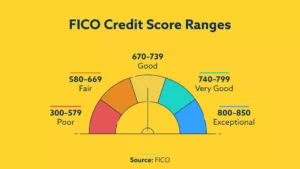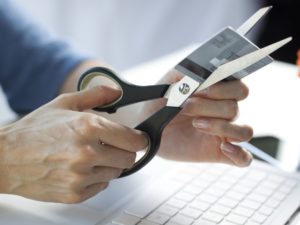Overdraft fees remain an enormously profitable revenue source for banks despite long-term trends pointing downward.
U.S. banks took in $6.13 billion in overdraft revenue in the first nine months of 2021, according to S&P Global Market Intelligence data.
Bankrate’s checking account survey reported the average overdraft fee is $33.58. What’s worse is that households that can least afford the fee are more likely to be assessed an overdraft fee. A recent study by Financial Health Network showed:
- Low-to-moderate-income households are 1.8 times more likely to have overdrafted than higher-income households.
- Forty-three percent (43%) of vulnerable households with checking accounts report having overdrafted in 2020, with 9.6 overdrafts on average.
The good news is that some banks have started to lower or do away with overdraft fees amid competition from the proliferation of Fintechs. Here are few banks that recently changed their overdraft fee policy:
- Capital One recently eliminated overdraft fees.
- Internet bank Ally has eliminated overdraft fees.
- Chase has made it easier for customers to fund their accounts if they overdraw by $50 or less. They have until the end of the next business day to replace the overdrawn funds without incurring a fee.
- Bank of America will cut its overdraft fee to $10 from $35 for customers starting in May 2022.
- U.S. Bank will provide account holders a full day to deposit funds to avoid a fee when the negative balance is more than $50. Plus, the amount an account can be overdrawn prior to fee assessment will increase from $5 to $50 by the second quarter of 2022.
- Wells Fargo announced a 24-hour grace period to fund overdrawn accounts and the elimination of transfer fees from linked accounts.
- Huntington Bank, a regional bank with branches in 12 states, has implemented a 24-hour grace period.
What exactly is an overdraft fee?
A fee charged by your bank for having insufficient funds in your checking account to pay for a purchase, charge, or even an ATM transaction.
This could be called an overdraft fee, a non-sufficient funds fee, or a bounced check fee. The charge for a rejected transaction or check is known as a nonsufficient funds fee, while the charge for an approved transaction is called an overdraft fee.
How overdraft fees add up
There’s the chance you could be charged multiple overdraft fees per day if you make many transactions with a negative balance. This could add up to hundreds of dollars in fees. In the past banks some banks have been accused of reordering transactions that cause multiple overdraft fees for example, by reordering customers’ transactions, deducting big transactions first so that smaller payments would then trigger multiple overdraft fees.
Unfortunately, unpaid overdraft fees are often the reason people end up in ChexSystems. If ChexSystems items have barred you from the banking industry you may want to look into opening a second chance checking account.
These accounts are designed to help consumers qualify for a new checking account even with negative marks on their banking records.
7 ways to avoid being trapped into overdraft fees
1. Refuse overdraft protection
Check the fine print of your account agreement to verify if you are enrolled in a courtesy overdraft or bounce protection program. This is not the same overdraft protection where you have a separate account that covers overdrafts or the bank extends a line of credit to cover overdrafts.
Many banks and credit unions enroll customers into courtesy overdraft program where they will pay for transactions but it will cost you an overdraft fee. It’s really no courtesy at all — they are making big bucks off that “courtesy” to you. Consumers who repeatedly overdraw their accounts should consider revoking their selection—something that bank customers can do at any time, says Susan Weinstock, director of the consumer-banking project at Pew.
If you are enrolled in a fee-based debit overdraft program, you can change your mind at any time. Just notify the bank or credit union that you don’t want debit overdraft coverage.
If you do not believe you’ve authorized debit overdraft protection, and the bank or credit union charges you a debit overdraft fee, you may file a complaint. For customers not enrolled in a debit overdraft program, the bank or credit union will decline ATM or debit card transactions when your account doesn’t have enough funds to cover them, and you will not be charged a fee when this happens.
2. Cushion your account
Protect yourself by adding a small cash cushion to your account every month. This can really help if you get caught by overdraft fees due to small amounts. Because many people no longer use check registers and most transactions are electronic, point of sale, or ATM/debit card transactions, it’s challenging to keep up transactions. Check registers have become obsolete. A small cushion of just $50 may save you from overdrawing your account.
3. Review your monthly statement
Don’t assume everything on your bank statement belongs to you. There could easily be errors that can go unnoticed for months. Suppose your debit card was hacked but you are unaware.
Hackers are very astute. Some deduct small amounts monthly from unsuspecting consumers. Be sure to contact your bank if you have any questions or find an error in your checking account statement. Routinely check your balance online or by calling your bank.
4. Sign up for online alerts
If you sign up for online alerts with your bank or credit union, you will receive an email when your checking account balance dips below a certain limit like say $25 or less. This will help you know when to add more cash to your account.
5. Sign up for true overdraft protection
Refuse the bank’s “courtesy” overdraft protection program and sign up for a true overdraft protection program that is linked to a savings account, line of credit, or credit card. This is a guaranteed protection if you overdraw your account that will not cost you an overdraft fee for covering transactions. “Bounce coverage” and “courtesy overdraft protection” programs are operated at the bank’s discretion. So there’s no guarantee that every overdraft will be covered and you could still wind up bouncing a check.
6. Avoid using debit cards to buy gas, check into a hotel, or rent a car
These merchants place a hold on your checking account when you pay by debit card. The hold can be for the full amount of the bill or more. While no money actually leaves your checking account, a hold does limit your available balance for a few days.
Just one $50 block from a gas station could be enough to overdraw your account. Fintech companies like Current offer free overdraft protection with no additional overdraft fees as long as you have a direct deposit of $200 or more set-up1.
7. Request your bank to waive the fee
If you overdraw your account call your bank and request that they waive the overdraft fee. It can be done and some banks even allow one courtesy waive of an overdraft fee per year. There’s good reason to request the fee be waived, for example:
- When customers make a number of debit-card purchases or automated-teller-machine withdrawals in a single day that exceed their checking-account balance, they can incur multiple overdraft fees that day.
- Some banks increase the overdraft fees people incur in a single day by reordering their transactions, according to a report released by Pew Charitable Trusts, a nonprofit public-policy organization.












